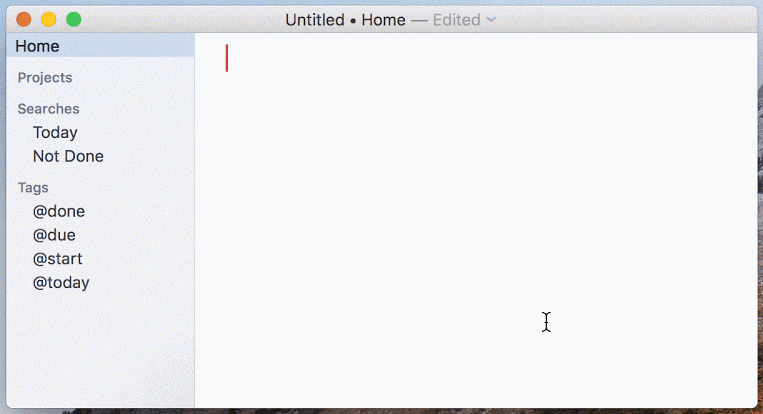

If that helps you think then Bike might be fore you. The way that it "feels" is important and different than any other app. It's more like a text editor with some magic features, then it is like a directory of text files. I think Bike is more "tool for thought" than it is tool for notes. Paying annually for Ulysses, a writing app I really do use every day, is one thing paying for MindNode, which I use maybe once a quarter, is a big ask. Having said that, I’m not sure a subscription model makes sense for an app like MindNode, since I’d bet a majority of its users only work on mind maps sporadically That’s conjecture on my part, of course, and I could be absolutely wrong, but I suspect people who do everything with mind maps are fairly few and far between.
#Bear vs taskpaper free
The traditional commercial model of “buy the new major version and get free updates until the next major version that makes you buy it again, hopefully at a discount” does always give you the option of not upgrading if you don’t want the new features, to be sure, but if you are a regular user and tend to buy upgrades as they come out, the price difference tends to be minimal. I’ve found that in most cases, new features that would probably be held for major version releases (e.g., “this is a feature that would entice you to pay for the upgrade”) just come out when they’re ready it’s essentially shifting the app to a rolling release model. While I’m sympathetic to that, I’ve (somewhat) come around on the notion of “subscription apps” if the developers are responsible with it. If they really are a problem and you are on battery then you can turn off animations in preferences.
#Bear vs taskpaper mac os
I don't think the animations are expensive, but it's hard to test because that work happens in Mac OS window server and I'm not an expert there. On the other hand resize is instant and only does work for visible text in Bike. And then after that resize there's lots of background processing to refill a bunch of layout caches I guess. If you open a large document in TextEdit you will see that resize is quite slow and processor and memory intensive. So you pay for that cache and you also pay for the background processing required by pre-rendering.Īlso consider simple things like window resize. For most macOS apps scrolling performance is achieved by pre-rendering before and after the visible scroll area. This means you only pay memory for visible text. In Bike it's fast enough that when you scroll it just updates what you can see on the screen. I think the architecture needed to support them means the total package is less than most apps. Already probably fast enough for 99% of use cases as is. That will be fun, but not sure it’s actually needed. Eventually I may change to augmented b+tree and then should be able to work with gigabytes worth of outline. This is Bike’s performance bottleneck for large outlines. I’m using OrderedDictionary from Swift Collections to store rows. View implementation requires that each row has a unique ID. Each row has a `level` property, outline structure is determined dynamically.

Model representation is interesting in that it’s just a flat list of rows.


Bike’s most original feature is the “fluid” text editing.


 0 kommentar(er)
0 kommentar(er)
